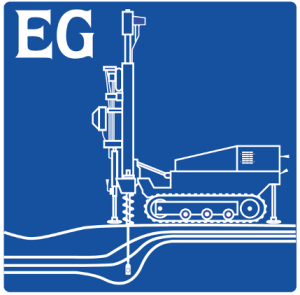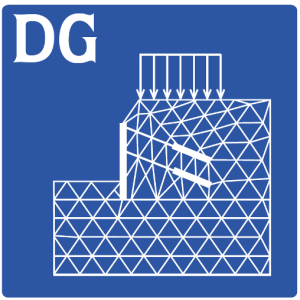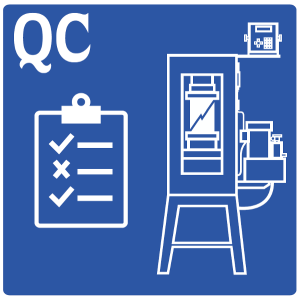Our Services
Geotechnical exploration
MYV establishes a geotechnical model (soil profile) in accordance with the reality of the environment, in interaction with civil works, both from a geological and engineering point of view.
MYV has numerous equipment for on-site tests. The main tools of MYV are the following:

Geotechnical Exploration: MYV establishes a geotechnical model (soil profile) in accordance with the reality of the environment, in interaction with civil works, both from a geological and engineering point of view. MYV has numerous equipment for on-site tests. The main tools of MYV are the following: MYV establishes a geotechnical model (soil profile) in accordance with the reality of the environment, in interaction with civil works, both from a geological and engineering point of view.
The SPT survey is the most widely used in Costa Rica and its execution is based on the ASTM D1586 standard. This assay has its advantages and limitations, and MYV has used it especially in residential projects and developments.
The rotary method consists of a diamond bit, connected to pipes that are added as the drilling progresses, which extract samples of the rock and/or soil strata every meter; during the rotation process, water and/or mud are injected to facilitate the penetration of the bit and pipes into the ground and to give stability to the excavation walls
In geology or complex problems, the participation of the Engineering Geologist is essential to understand the distribution of geological materials, as well as geological phenomena such as erosion, local faulting, and others. The contribution of the Geologist in the exploration is extremely important to achieve a more precise understanding of the relationship geology - geotechnics - project.
The SDMT (Seismic Dilatometer) is a hybrid test, product of the combination of the standard DMT (DMT) with a seismic tube. This seismic tube is an element with two receivers spaced 50 cm, used to measure the shear wave velocity (Vs). From the shear wave velocity (Vs), the maximum shear modulus – for small strains (Go) can be determined. SDMT allows to obtain a profile of Vs in a fast and precise way (repeatability of measurements between 1 and 2%). In addition to Vs, SDMT allows to obtain in parallel the same information that is obtained from the traditional DMT.
MYV has an electric cone (ASTM D5778) type ICONE manufactured by AP van der Berg, world leader in the manufacture of equipment for in situ exploration. MYV was in interaction with AP to generate a team customized to MYV's needs. The ICONE uses a data acquisition system to digitally capture the information from the piezocone sensors (cone resistance qc, friction fs, pore pressure u2, Tilt Ix, Tilt Iy). This group of data is generated every 1 to 5 cm of depth, throughout the length of the borehole, at a rate of 2 cm/second. The information is displayed in real time, on the screen of a portable computer. The piezocone is a unique tool for stratigraphy, identification of soil types and determination of geotechnical parameters for foundation design (shallow and deep).
At the beginning of 2013 MYV acquired a new pressure gauge model called Pencel, produced by the Canadian company Roctest. The Pencel pressure gauge is a single cell pressure gauge used to perform load tests on soils. Its conception and design were based on the experience developed by Roctest in the use of other types of pressure gauges, such as the TEXAM, which also has MYV. The Pencel pressure gauge can be used to acquire design parameters for foundations, piles and pavements.
The Lefranc test, applicable to soils, makes it possible to find the permeability coefficient in permeable or semi-permeable soils, of the granular type, located below the water table, and in highly fractured rocks. There are two methods for performing the Lefranc test: at a constant level and at a variable level. MYV has the equipment to carry out the test by both methods.
El ensayo Lugeon, aplicable a macizos rocosos, se realiza en el interior de sondeos y permite calcular semi cuantitativamente el coeficiente de permeabilidad de los macizos, en cualquier tipo de litología y nivel de fracturación, y a profundidad. Su aplicación es muy útil para valorar la permeabilidad global de un macizo rocoso, por lo que se utiliza en terrenos poco permeables y cohesivos.
The triaxial test according to ASTM D4767 (Standard Test Method for Consolidated Undrained Triaxial Compression Test for Cohesive Soils). The multistage triaxial test is aimed at obtaining soil parameters and the stress-strain relationship, through the determination of the shear stress. The information obtained from this test is the most representative of the shear stress suffered by a mass of soil when loaded.
According to the ASTM D1587 standard (Thin-Walled Tube Sampling of Fine-Grained Soils for Geotechnical). MYV has a Karol-Warner Conbel type pneumatic consolidometer. The advantage of this equipment is that it is very precise as it uses compressed air instead of traditional weights to apply the loads required in a consolidation test.
MYV cuenta con un consolidómetro neumático del tipo Karol-Warner Conbel. La ventaja de este equipo es que es muy preciso al utilizar aire comprimido en vez de las tradicionales pesas para aplicar las cargas requeridas en una prueba de consolidación.
Soil tests (Atterberg limits, natural humidity, Specific Gravity, etc.).
Aggregate tests (loose/rodded unit weight, specific gravity, absorption, granulometries).
Standard Proctor / Modified Proctor.
CBR
Ensayos en agregados (peso unitario suelto /envarillado, gravedad específica, absorción, granulometrías).
Proctor Estándar / Proctor Modificado.
CBR
The triaxial chamber allows the execution of the permeability test according to ASTM D5084 (Standard Test Methods for Measurement of Hydraulic Conductivity on Saturated Porous Materials using a flexible Wall permeameter)
The version for geological profiles allows the determination of shear wave velocity profiles (Vs) up to depths of 30 meters. These Vs profiles can be useful for different applications, including the following: Dynamic response analysis of soils, foundation design for vibratory machines, determination of the natural period (Tn) of the soil profile, classification of the type of profile according to the CSCR- 2010 (S1, S2, S3 or S4), determination of VS30 (Weighted shear wave velocity in the first 30 meters of depth).
The FVT test is known as the vane test, and its execution follows the ASTM D2573 standard. In order to make its execution as specialized as possible, MYV brought from Norway the version of the Vane commercialized by Geonor (commercial arm of the NGI – Norwegian Geotechnical Institute).
MYV has specialized equipment for the extraction of undisturbed soil samples required for resistance and deformability tests. The sampler tube is inserted into the ground with CPT-type push technology and is a sampler designed by PAGANI (Campeonatore). The nominal diameter of the sample drawn is 3 inches (76 mm). Additionally, MYV built its own system to extract the sample from the sampling tube, by means of a piston activated with compressed air, which reduces alteration. The ASTM standard that applies to this sampling process is ASTM D1587-08 (Standard Practice for Thin-Walled Tube Sampling of Soils for Geotechnical Purposes).
The dilatometer test (DMT, ASTM D6635 and Eurocode 7 – Part2) consists of pushing a flat blade located at the end of a series of bars. Once the test depth is reached, a thin circular steel membrane, located to one side of the blade, begins to expand horizontally against the ground. This expansion is carried out by inflating with Nitrogen gas. The pressure registered by the manometer on the surface is determined for three specific moments of the test: p0, p1 and p2. The membrane is deflated and the flat blade is advanced to the next sampling depth. The main application of the DMT is the estimation of Settlement of structures in Clay or Sand deposits, as well as the determination of the resistance of clays and sands. Other applications are the following: compaction control, detection of failure surfaces in slopes, estimation of liquefaction potential, calculation of piles under lateral load and other geotechnical problems using the soil parameters for which the DMT provides estimated values.
The cone penetration test (CPT – Cone Penetration Test) consists of inserting a conical piece into the ground linked to a load cell that continuously measures the resistance of the ground to the penetration of the conical toecap (qc). It also simultaneously measures the resistance to lateral friction (fs) offered by the ground to the passage of a cylindrical piece located immediately above the conical tip.
El presiómetro TEXAM es utilizado para ejecutar ensayos de carga in situ a diferentes profundidades. Ha sido desarrollado para ofrecer un tipo de presiómetro más fácil de manejar.
The TEXAM pressure gauge is used to carry out load tests in situ at different depths. It has been developed to offer a type of pressure gauge that is easier to handle. MYV is to use the pressure gauge in those geologies that are not penetrable with the Marchetti Dilatometer or the Piezocone. Its main advantage is that it allows to obtain complete stress-strain curves in the soil and it is very useful for calibrating geotechnical finite element models (FEM).
The PANDA is a lightweight, dynamic penetrometer with variable impact energy. The basic principle of this equipment consists of driving a train of bars 50 cm long, provided with a conical metallic tip, which can be 2 cm2 or 4 cm2. The PANDA test offers an initial geotechnical study, since it defines the resistance of the ground, and provides better advice for the foundation. An electronic data device records all the information and immediately calculates the dynamic resistance of the cone (qd). The depth and impact velocity of the hammer is automatically recorded with each hit.
Un dispositivo de datos electrónico registra toda la información e inmediatamente calcula la resistencia dinámica del cono (qd). En cada golpe se registra automáticamente la profundidad y la velocidad de impacto del martillo.


Geotechnical analysis and design: With numerical tools based on the Finite Element Method (FEM) and the Limit Equilibrium Method (LEM), MYV predicts the mechanical response of the ground under structural loads, defined in terms of deformations and stresses. Subsequently, through a technical-economic analysis, MYV optimizes the geotechnical-structural design of foundations, walls and other structural elements in interaction with the ground. Con herramientas numéricas basados en Método de Elementos Finitos (FEM) y Método de Equilibrio Límite (LEM), MYV predice la respuesta mecánica del terreno bajo cargas estructurales, definida en términos de deformaciones y esfuerzos. Posteriormente, mediante un análisis técnico–económico, MYV optimiza el diseño geotécnico–estructural de cimentaciones, muros y otros elementos estructurales en interacción con el terreno.
Service conditions (settlements) and ultimate conditions (shear failure) of driven piles, pre-excavated piles, micropiles and others. The reinforcing steel design, geometric determinations (length, diameter), etc. are included.
MYV has conventional tools to determine the factor of safety (FS) for slope stability analysis, using limit equilibrium methods (Bishop, Janbu, Spencer). The implementation of these methods is limited to 2D models.
On the other hand, the FEM analysis with Midas GTS allows the use of more advanced methods such as the “c – phi reduction” method in 2D and 3D models. With this method, it is feasible to determine both the factor of safety and the mode of rupture (most probable rupture surface).
Por otro lado, el análisis FEM con Midas GTS permite el uso de métodos más avanzados como el método “reducción c – phi” en modelos 2D y 3D. Con este método, es factible determinar tanto el factor de seguridad como el modo de ruptura (superficie de ruptura más probable).
MYV has experience in the analysis and design of repair/mitigation of all types of landslides: mud flows, debris flows, road landslides, translational landslides, rotational landslides, roto-translational landslides, block falls, rock mass landslides ( wedges, planar sliding, overturning or toppling, etc.), among others. Among the stabilization solutions, MYV manages: reinforcement with piles, retaining walls, drainage trenches, shear trenches (shear keys), conventional drainage systems, counterweight fillings, etc.
MYV has experience in the analysis and design of ground improvement methods (Ground Improvement) such as Rigid Inclusions, ground reinforced with geosynthetics, gravel columns, Dynamic Compaction, Dynamic Replacement, Overload Consolidation, etc.
MYV has experience in the analysis and design of retaining wall methods of different types such as: reinforced earth walls, geotextile walls, reinforced soil fills, gabion walls, reinforced concrete walls, masonry walls, pile walls. , walls of soil nailing (nailed soil), anchored screens, among others.
MYV can also analyze and solve atypical or special geotechnical problems, such as: scour in bridges, expansive soils, collapsible soils, soils with liquefaction potential, organic soils, soft soils, poorly compacted artificial fills, and forensic analysis.
MYV brinda servicios de seguimiento geotécnico y de materiales durante la etapa constructiva del proyecto específico. Esto incluye las siguientes actividades: pruebas de fondo de placa, revisión del nivel de desplante de placas, revisión y seguimiento de materiales de construcción, sugerencias y medidas correctivas con respecto a problemas durante la marcha, sugerencias para excavación, protección de taludes, control de erosión, etc.
Adicionalmente, se incluye el diseño y ejecución de pruebas de carga en placas (Plate Load Test), así como pruebas de carga en pilotes y micropilotes. Para el año 2011, MYV tiene proyectado incluir en sus servicios constructivos, la instalación y lectura de Celdas Osterberg para verificar la capacidad por punta y fricción, contra desplazamiento, de pilotes preexcavados.
MYV tiene disponible el uso de pruebas tipo SE / IR (Sonic Echo / Impulse Response) para verificar la integridad de pilotes hincados y pilotes preexcavados, durante la etapa constructiva. Adicionalmente, también contamos con el método SIR (Slab Impulse Response) para verificar la integridad de losas de contrapiso y losas de cimentación.
Por último, MYV cuenta con tecnología tipo PROFOMETER para detección y caracterización de acero de refuerzo: ubicación, orientación, recubrimiento y diámetro de barra, entre otros. Esta tecnología es muy útil para un Ingeniero Inspector con el objeto de verificar características del acero de refuerzo en un elemento que ya ha sido colado.


CIH (Clegg Impact Hammer) allows obtaining the CIV (Clegg Impact Value) which is correlated with CBR and %Compaction. By means of the CIH, it is possible to sweep the landfill that is being compacted up to 20 tests in less than 20 minutes and spatially define areas with compaction problems. Through real-time monitoring, it is possible to tell the contractor where the problems are and how to correct them.
DCP (Dynamic Cone Penetrometer) allows to verify several filler layers with a combined thickness up to 1 meter. This is in contrast to the CIH which only allows checking individual layers (up to 25 – 30 cm thick). The DCP allows you to find loose layers hidden between layers that are complying. In this way, the DCP test is a test that allows to detect problems, after the completion of a filling up to 1 meter thick.
Sampling and failure of concrete cylinders. Conventional slump with cone. Slump with K-Slump Tester for quick checks. Monitoring and quality control of concrete production through innovative statistical techniques such as: SPC (Statistical Process Control), PWL (Percentage Within Limits) and CUSUM. Introduction in the country of the FCT (Fresh Concrete Tester) for rapid and simultaneous determination of important parameters of fresh concrete such as Temperature, Slump, Water / Cement Ratio, potential resistance at 28 days, etc. Use of the type B pressuremeter to measure the air content in any fresh concrete mix.
Extraction and failure of concrete cores in structural elements (beams, columns and slabs). Extraction can be done with our Milwaukee Brand Core Drilling Machine for 4-inch and 6-inch diameters. Non-destructive tests by means of Sclerometer. Non-destructive tests by means of SASW-s (Spectral Analysis of Surface Waves, structural version). MYV also has the CTG – SASW that combines simple and compact IMPACT ECHO and SASW techniques to have a non-destructive review of the quality of hardened concrete (resistance, element thickness and presence of defects).
Determination of the integrity of piles according to the ASTM D6760 standard, with this test the integrity of the pile can be verified using an ultrasonic pulse through previously installed ducts.
For compaction control, MYV makes decisions and corrections before starting the compaction process to ensure the final compacted product. In this sense, the humidity of the material to be compacted is first checked by means of technologies such as TDR (Time Domain Reflectometry) and Capacitance (ECHO), which allow humidity control in a few minutes. If the material is too dry or too wet with respect to the optimum humidity, it is feasible to recommend corrective measures and determine directly on site when a humidity close to the optimum is reached.
Integrity of piles by the impact method at low deformations. The integrity test is a test that mainly tries to determine the variation of the concrete characteristics of the foundation piles along their entire length. The usual way of testing consists of placing a highly sensitive accelerometer at the top of the piles under test, and applying blows with an instrumented hammer. Likewise, our methodology is also carried out using a geophone to, in a redundant way, reach the same result.
